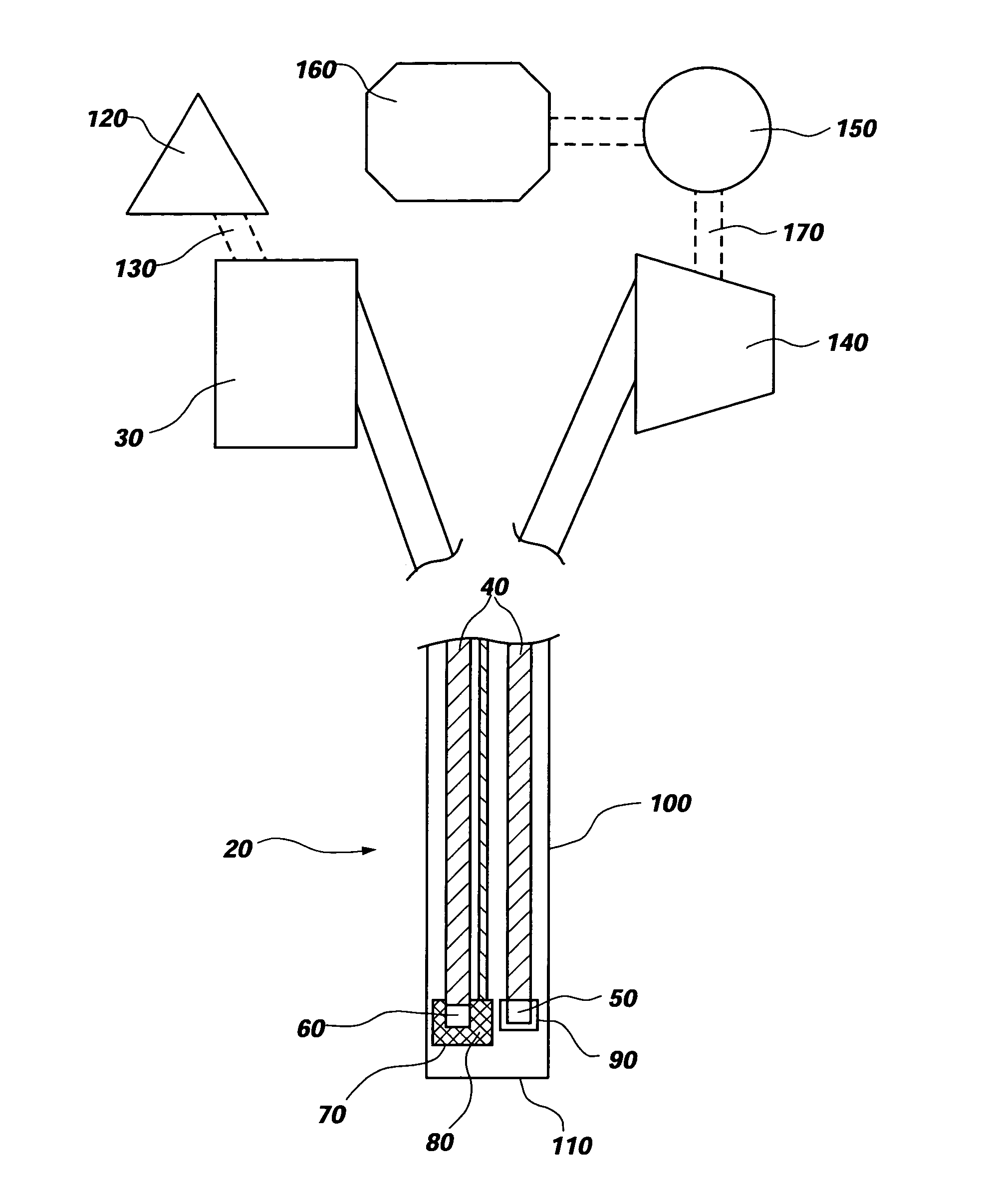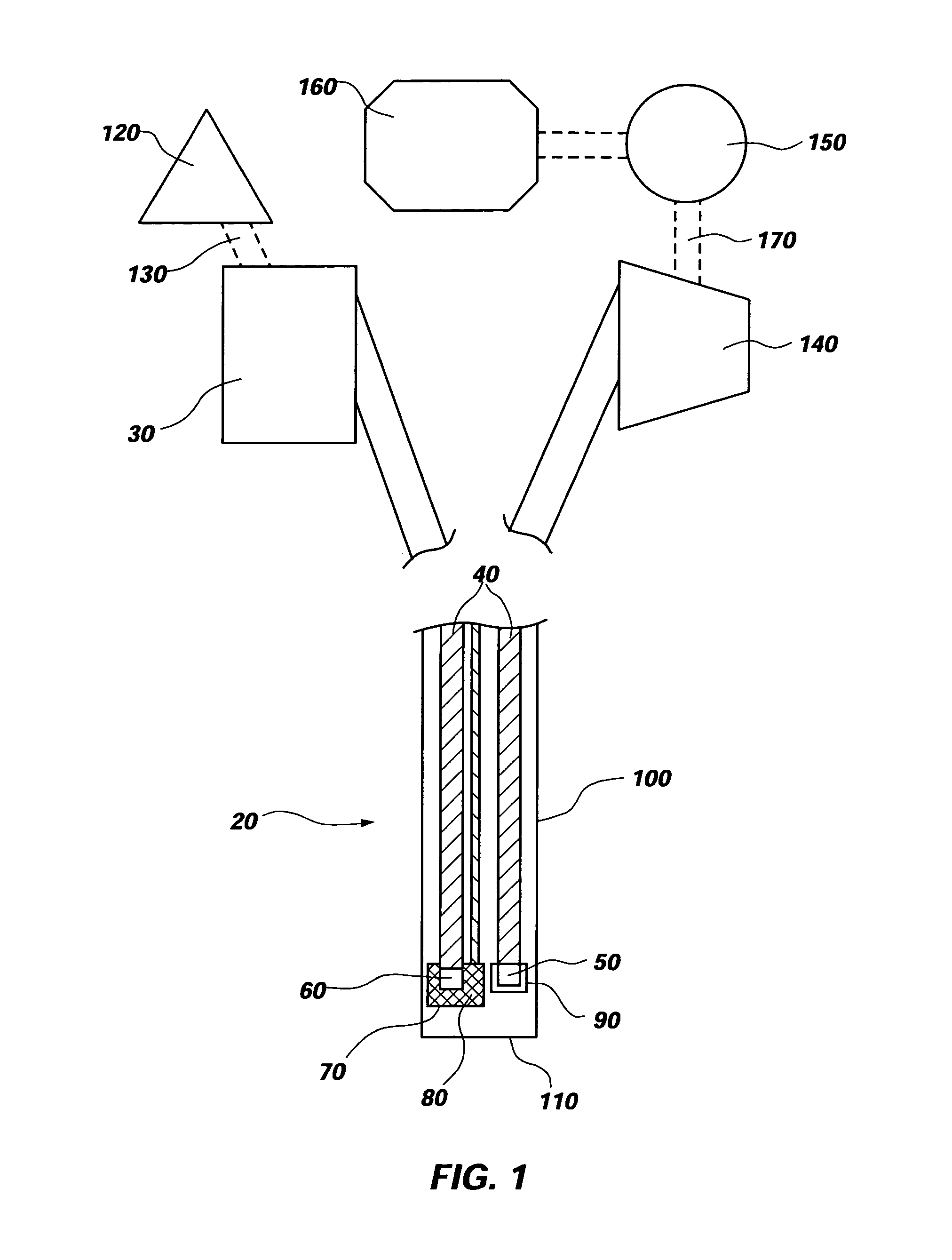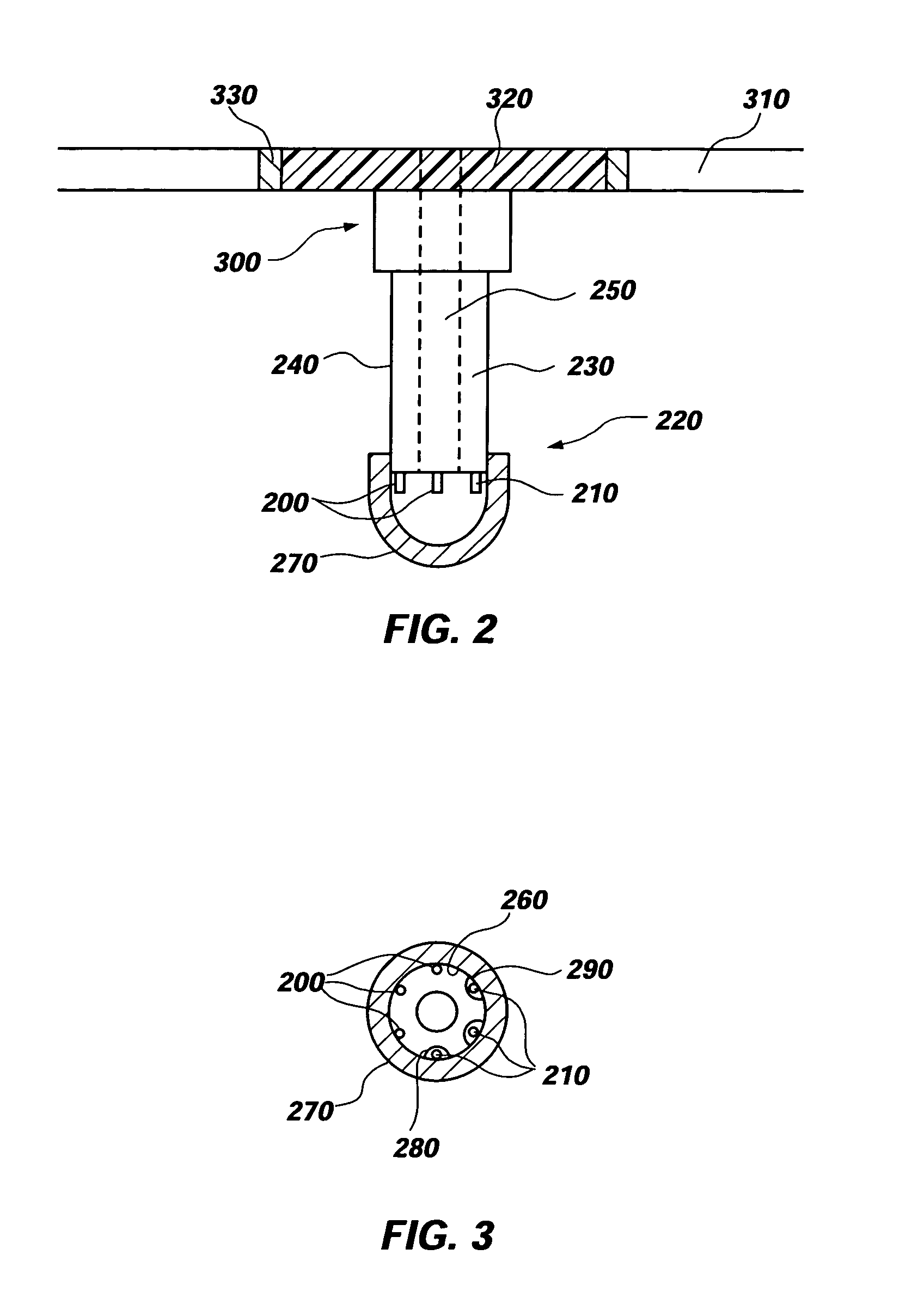System, apparatus and method for inferring glucose levels within the peritoneum with implantable sensors
a technology of implantable sensors and peritoneum, which is applied in the field of glucose measurement, can solve the problems of affecting blood sugar levels, posing more serious short-term dangers, and affecting the accuracy of blood sugar levels, so as to facilitate the placement of sensing apparatuses, improve durability, accuracy and effectiveness of devices
- Summary
- Abstract
- Description
- Claims
- Application Information
AI Technical Summary
Benefits of technology
Problems solved by technology
Method used
Image
Examples
Embodiment Construction
[0039]FIG. 1 illustrates a preferred embodiment in which an oxygen sensor probe, designated generally 20, comprises a conventional oxygen sensor probe. An example of such a probe 20, well established in the art, is available through Oceanoptics as a fiber optic oxygen sensor probe typically used to measure oxygen levels in water to monitor marine life activity. A light emitting diode (“LED”) 30 source of blue light that generates an electromagnetic pulse or current of energy in the wavelength range of about 500 nanometers or less is associated with an optical fiber, or a plurality or bundle of optical fibers or fiber assembly 40, which conveys the blue light energy to the probe 20.
[0040]First 50 and second 60 cooperating sensors within the probe 20 comprise a ruthenium II complex matrix which absorbs the blue light. The second 60 of the two sensors-60 further comprises a pocket 70 containing glucose oxidase 80. Each of the sensors is encapsulated by an oxygen permeable polymer barri...
PUM
| Property | Measurement | Unit |
|---|---|---|
| diameter | aaaaa | aaaaa |
| diameter | aaaaa | aaaaa |
| wavelengths | aaaaa | aaaaa |
Abstract
Description
Claims
Application Information
 Login to View More
Login to View More - R&D
- Intellectual Property
- Life Sciences
- Materials
- Tech Scout
- Unparalleled Data Quality
- Higher Quality Content
- 60% Fewer Hallucinations
Browse by: Latest US Patents, China's latest patents, Technical Efficacy Thesaurus, Application Domain, Technology Topic, Popular Technical Reports.
© 2025 PatSnap. All rights reserved.Legal|Privacy policy|Modern Slavery Act Transparency Statement|Sitemap|About US| Contact US: help@patsnap.com



